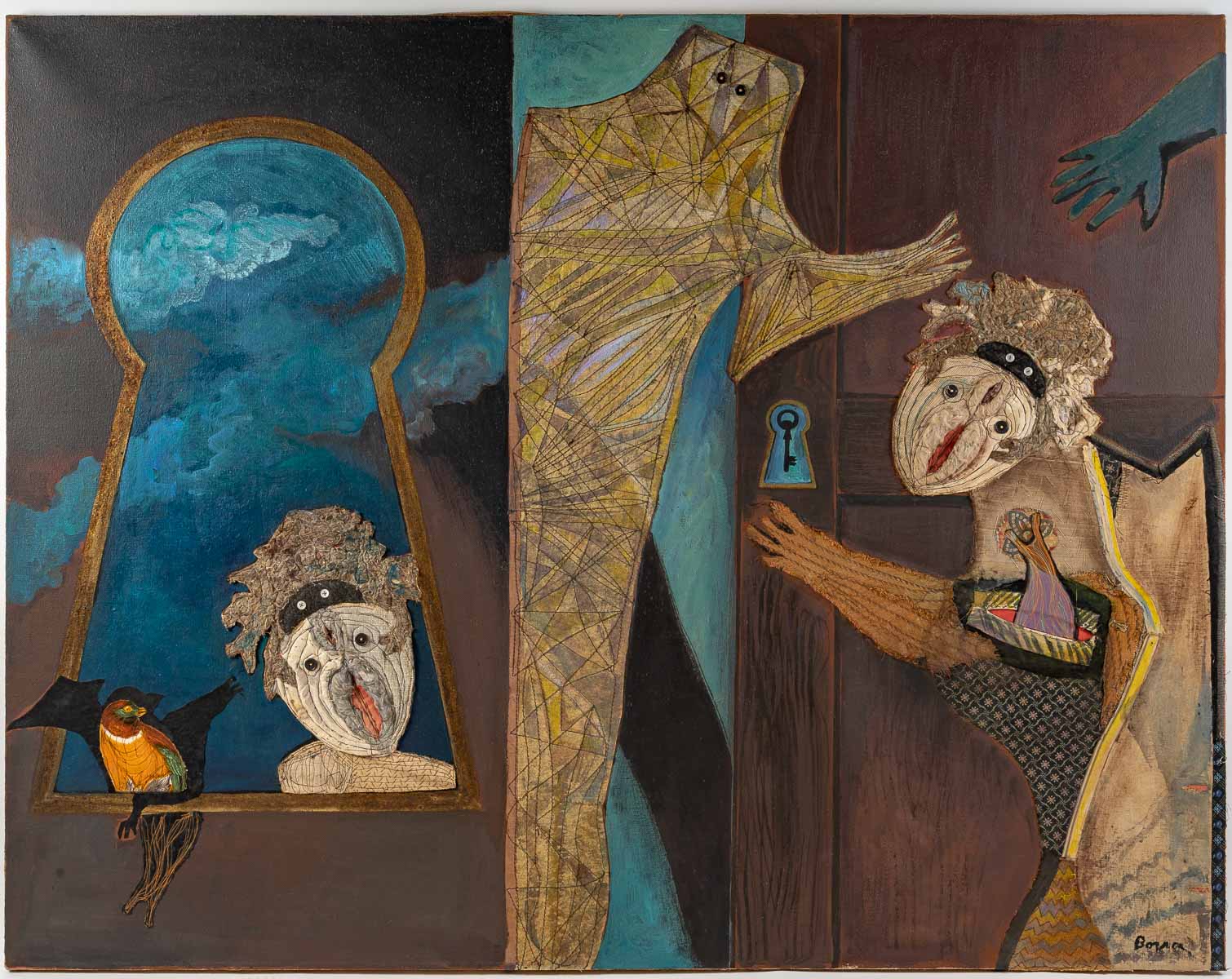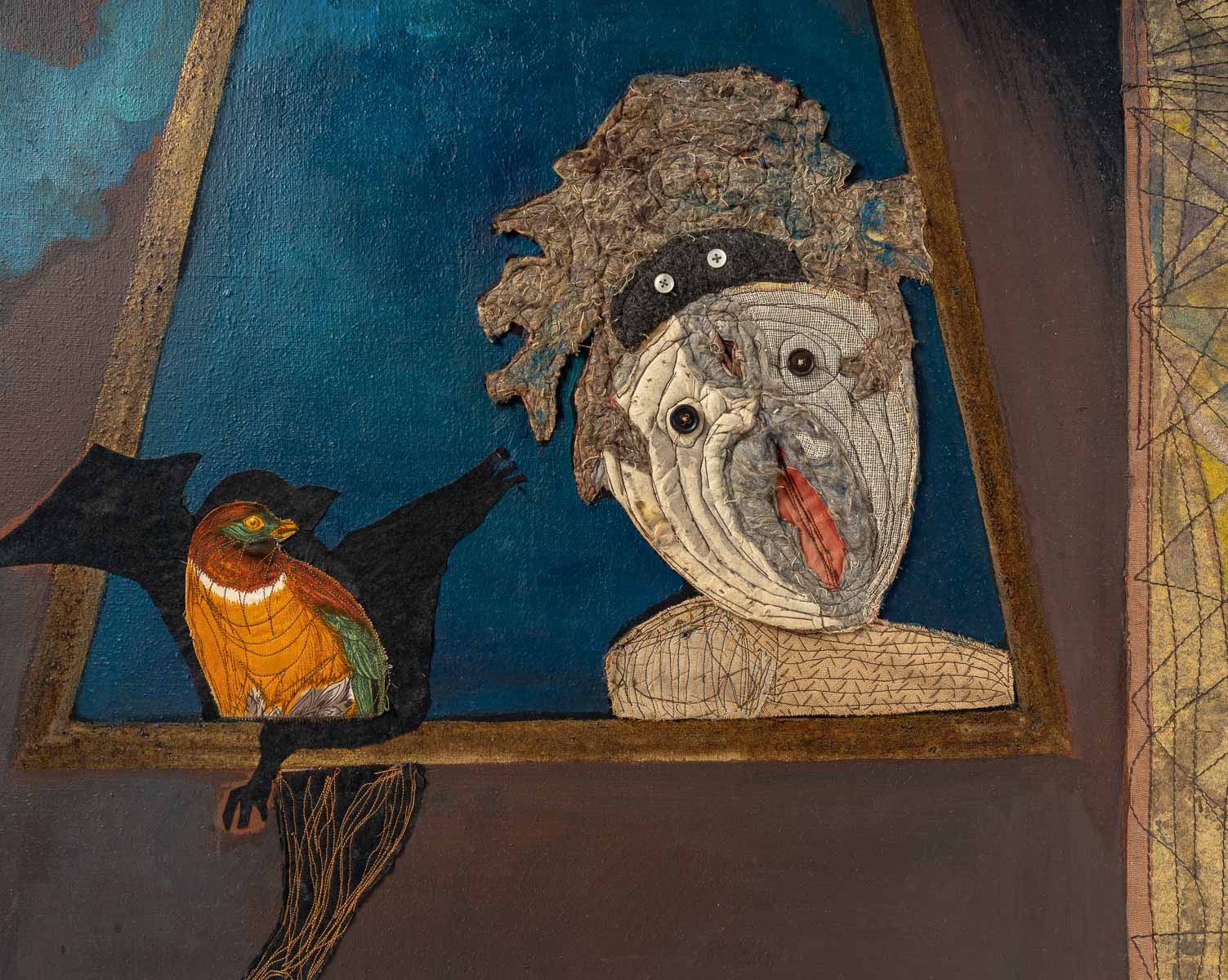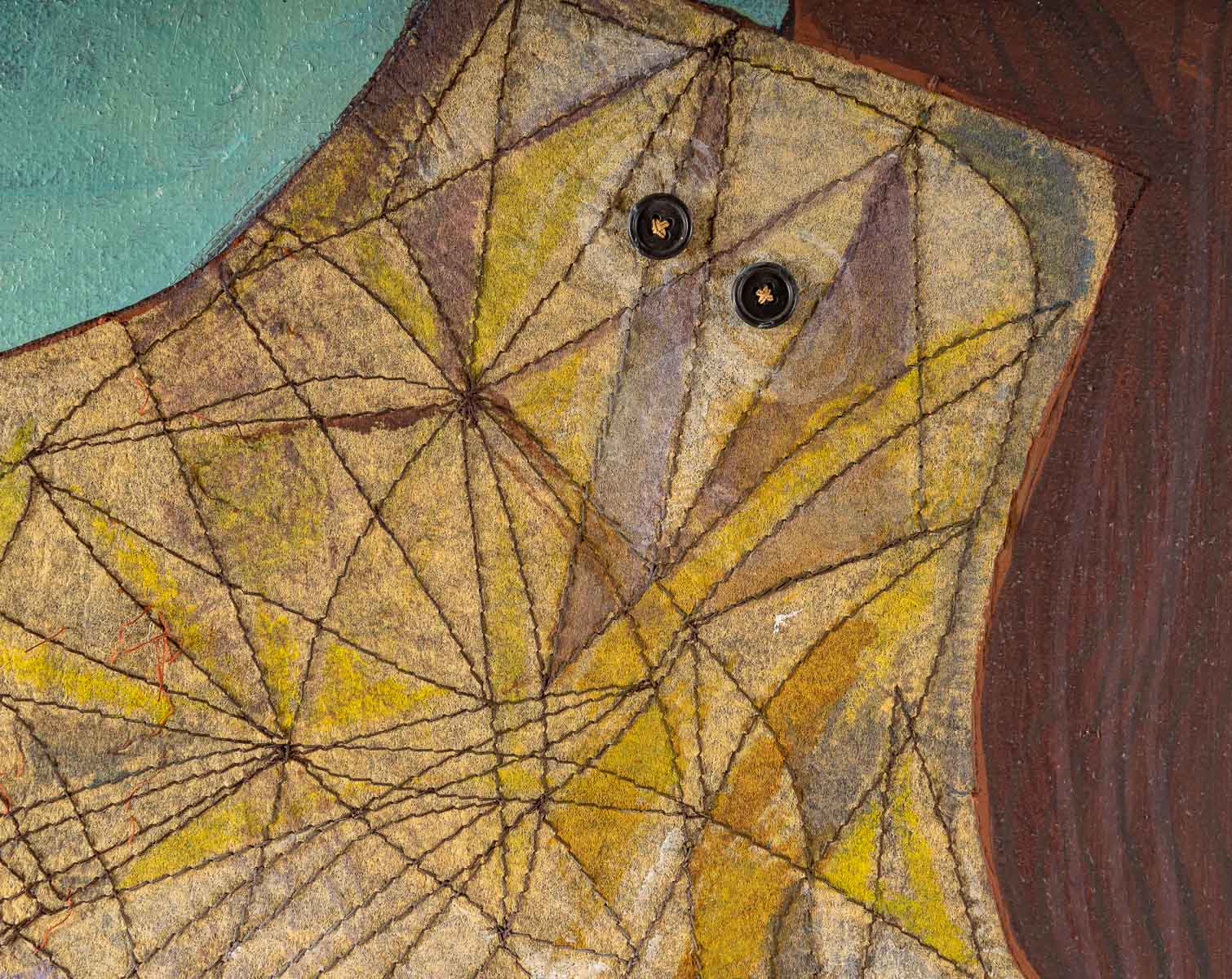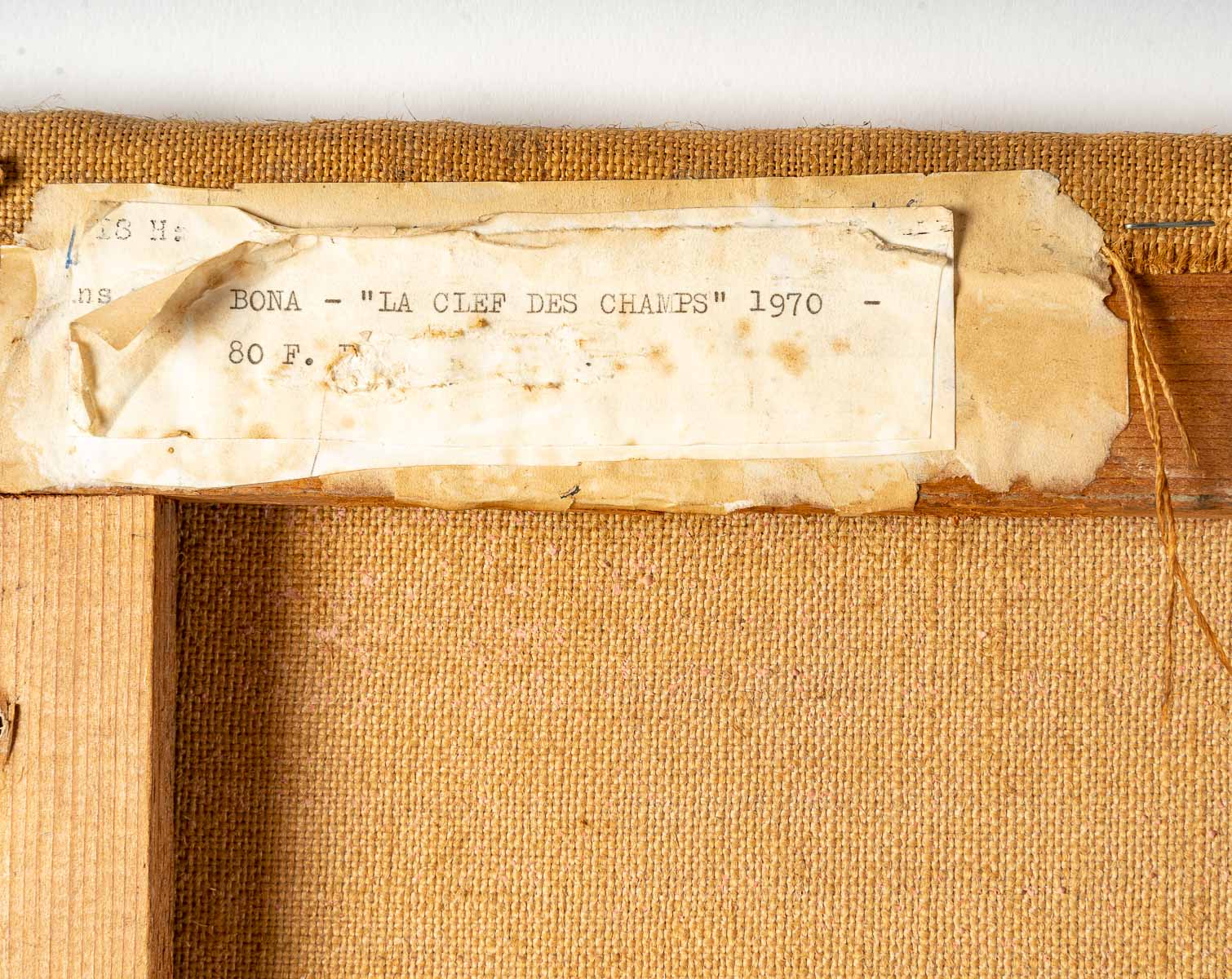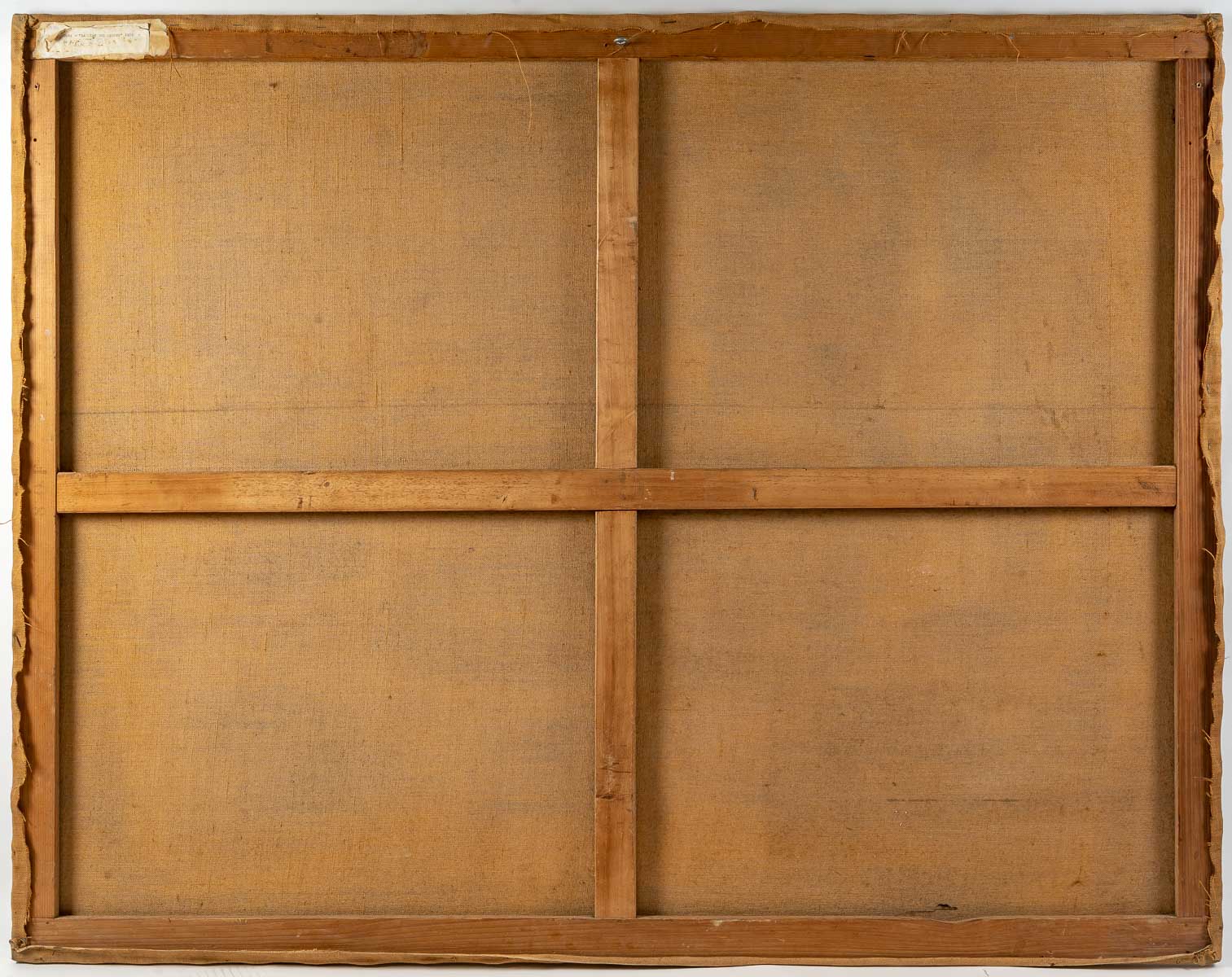BONA de Mandiargues (1926 – 2000)
A surrealist work by Bona representing a phantasmagorical and dreamlike universe, dated 1970, entitled “La clef des champs”. This fabric is sewn with fabrics and buttons. She stages unreal figures around a mysterious lock.
Mixed media on canvas: oil, fabrics, buttons.
Signed lower right
Titled and dated on the back: Label “La clef des champs” and dated 1970
Dimensions : 114 x 146 cm
SOLD
A dreamlike and mysterious universe directed by Bona
In a twilight atmosphere, three fantastic figures emerge from the darkness. They call out to us, seem to want to communicate with us. They are mysterious characters straight out of the imagination of the artist-painter Bona de Mandiargues (known as Bona) who staged them under the title “La clef des champs” in 1970. A mystery seems to be to be discovered, an enigma to be solved, characters to be unmasked.
In this dreamlike composition, the lock plays an important role and the key seems to be the gateway to help us unlock the secret of the painting.
A mixed technique, the collage, one of the favorite processes of the surrealists
Bona de Mandiargues uses his sewing machine as a drawing device. Fabric collage is her favorite mode of expression.
Since her first trip to Mexico, in 1958, Bona de Mandiargues had started to create paintings in fabric fragments, sewn with zig-zag stitch. In our work, she uses the suits and shirts of her late husband to express her art.
” I am self-taught and ignorant, but my knowledge is that of a magician” Bona
Biography
Born on September 12, 1926 in Rome, Bona Tibertelli de Pisis was the niece of the Italian painter of the metaphysical school Filippo de Pisis (1896-1956), and the wife of the writer André Pieyre de Mandiargues, who died in 1991. Strongly influenced by her uncle, she began to paint during the Second World War, after enrolling at the Venturi Art Institute in Modena.
Considered one of the major artists of the revival of surrealism in the feminine, Bona de Mandiargues began to exhibit in the early 1950s, in Italy and Paris. Woman of great beauty, whimsical personality with panache, she did not go unnoticed: dressed as a Portuguese nun for one of the last masked balls of Marie-Laure de Noailles, or dressed in this black dress inherited from her mother, which she had cut to show the tips of her breasts, she exposed herself, not without a certain taste for provocation …
Indeed, eclectic, generous and independent, her artistic expression drew from multiple sources and techniques, without being encumbered by theories or messages: she painted oils on canvas of surrealist inspiration, which mark her first way, full of symbols and invention, then arranged curious anthropomorphic roots of the prickly pear…
Bona de Mandiargues also made quite figurative paintings and portraits in acrylic, in particular, in 1968, his self-portrait and the portrait of André Pieyre de Mandiargues, richly illuminated.
She started to create paintings in fabric fragments, among other motifs, extremely striking portraits: that of Unica Zurn (1986) or André Breton (1994).
Bibliography
-Georgiana Colvile, Scandalously of them. Thirty-four surrealist women, Jean-Michel Place, Paris, 1999, pages 30 and following.
Sources:
https://www.lemonde.fr/archives/article/2000/08/29/bona-de-mandiargues-une-peintresse-qui-peignait-l-impossible_89395_1819218.html
https://www.babelio.com/auteur/Bona-de-Mandiargues/163990

